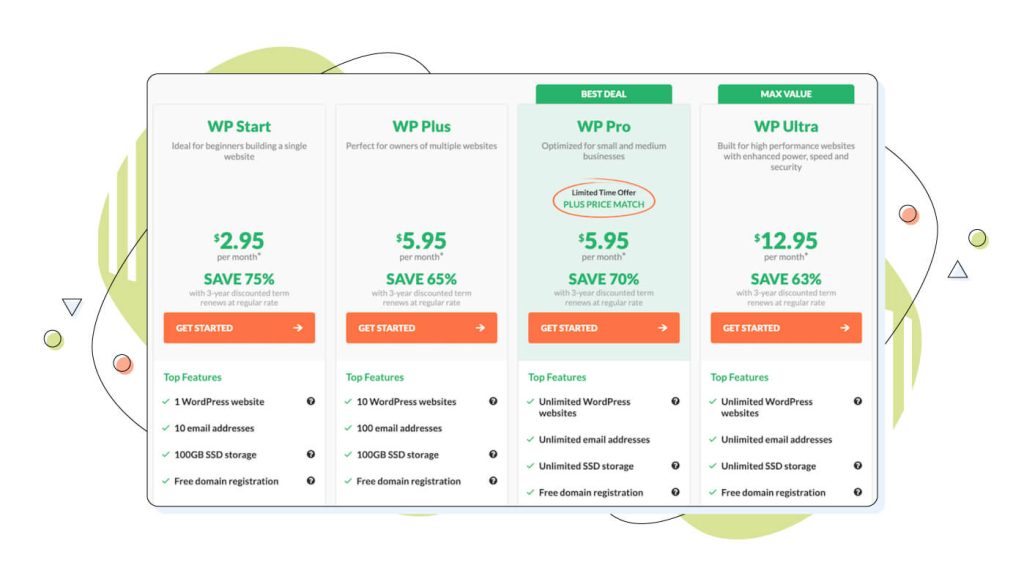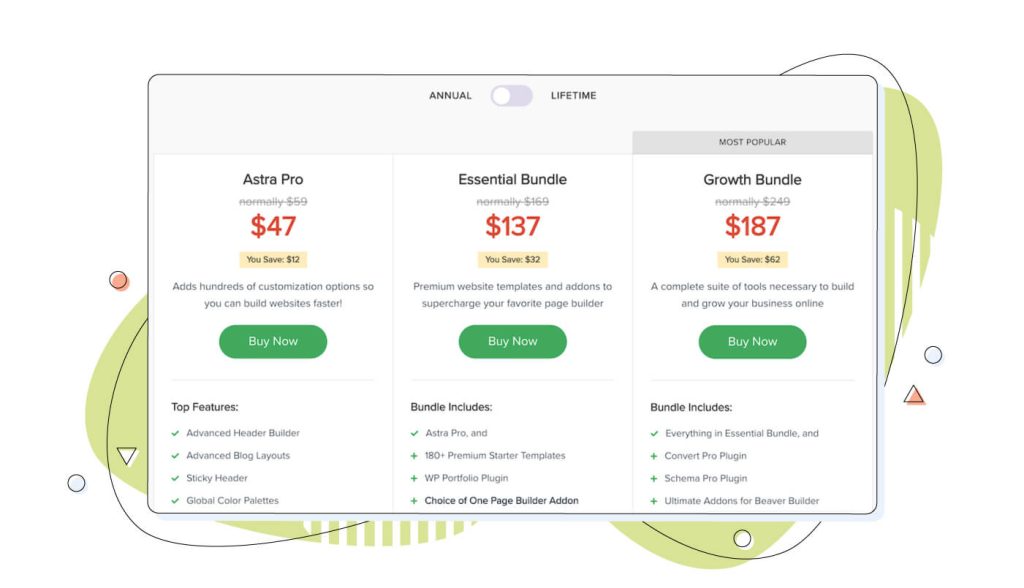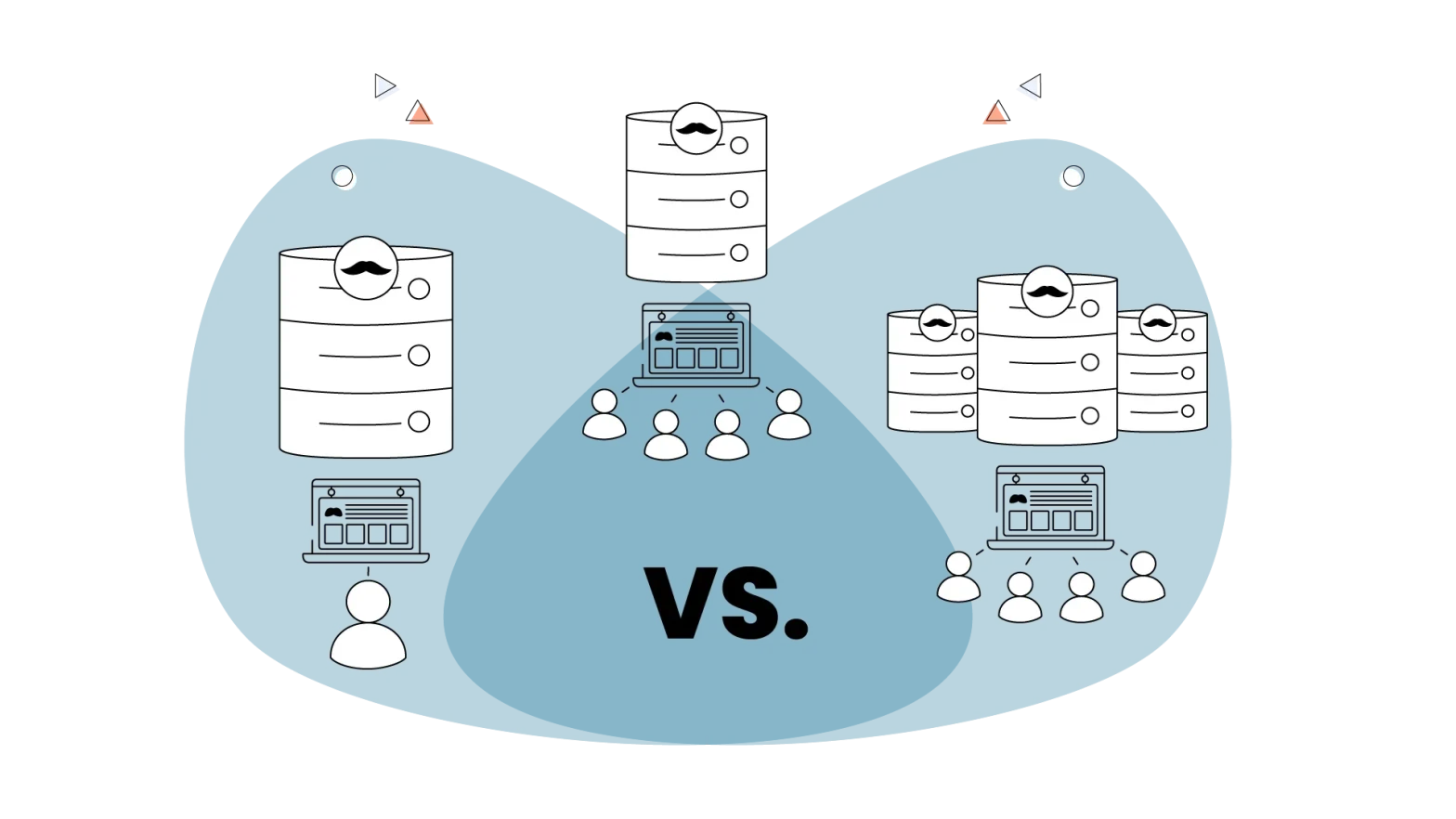Memberships and subscriptions have emerged as popular options for plenty of businesses by offering access to products or services.
In this article, we will explore the differences between memberships and subscriptions, their benefits, and how you can decide which model suits your business best.
We’ll also introduce SureMembers, a powerful WordPress membership plugin that simplifies membership and subscription management.
So, let’s dive in and discover the world of memberships and subscriptions!
- Defining Memberships and Subscriptions
- Factors to Consider When Deciding Between Memberships and Subscriptions
- SureMembers for Both Memberships and Subscriptions
- Exploring Different Types of Membership Models
- Exploring Different Types of Subscription Models
- Key Considerations for Effective Membership Management
- Key Considerations for Effective Subscription Management
Defining Memberships and Subscriptions
To begin, let’s clarify what we mean by memberships and subscriptions.
Memberships and subscriptions are two distinct business models that offer access to products, services, or exclusive benefits on a recurring basis. While they share similarities, there are some important differences between them. So let’s get to them.
Memberships
A membership is a contractual relationship between a customer and a business or user.
It grants the customer ongoing access to content, a community or services in exchange for a recurring fee. Businesses seeking a flexible, overarching agreement for multiple projects or services might benefit from exploring a Master Services Agreement (MSA).
Memberships often emphasize a sense of belonging and exclusivity with like-minded individuals. You’ll find several memberships across industries, from fitness centers and professional associations to exclusive clubs and retailers.
Subscriptions
A subscription is an agreement where customers pay a recurring fee to gain continuous access to products, services, or content. Subscriptions focus on convenience, providing ongoing access to a specific offering without the need for repeat purchases.
Subscriptions can include physical products, digital services, software, media streaming, or access to exclusive content. Netflix and Hulu are good examples of subscriptions.
There are numerous subscription plugins available that will help you in building a subscription website. Coupled with our starting guide for WordPress, you get a great headstart if you don’t already have a site, to begin with.
Memberships vs. Subscriptions: The Key Differences
While the two are more or less the same, here are the key differences between memberships and subscriptions.
Access vs. ownership: Memberships primarily grant access to exclusive privileges, communities, or specialized content. While subscribers may receive additional benefits such as early access or discounts, the core value lies in the ongoing access to the offering rather than ownership of the products or services.
Sense of community: Memberships often foster a sense of community and belonging. They provide opportunities for networking, interaction, and shared experiences, creating a community around a shared interest or goal. Subscriptions, while offering continuous value, may not necessarily focus on building a community.
Personalization: With memberships, you get a more personalized experience, tailored benefits, and content that fits an individual member’s preferences. Subscriptions may also provide customization options, but the emphasis is often on providing a standardized offering to a broad customer base.
Value proposition: Memberships emphasize the overall experience, community, and exclusive benefits as the core value proposition. Subscriptions focus on ongoing access to specific products, services or content as the primary value.

Pricing structure: Memberships often involve a fixed recurring fee, providing members access to a predefined set of benefits.
Subscriptions may offer different pricing tiers or plans, allowing customers to choose the level of access or additional features that align with their needs.
The distinction between memberships and subscriptions is a little blurred in places, but each has its place!
Explanation of Memberships as a Business Model
Memberships have gained significant traction across industries, providing a reliable revenue stream and fostering strong customer loyalty.

Benefits and Features
Memberships offer several benefits and features that make them attractive to both businesses and members:
a. Exclusive access: One key benefit of memberships is providing exclusive access to specialized content, services, or experiences. This exclusivity creates a sense of belonging and fosters a deeper connection between the business and its members.
b. Enhanced value proposition: Memberships often come with additional benefits that enhance the overall value proposition, such as discounts, personalized recommendations, early access to products or services, priority customer support, or member-only events. By offering these extra perks, you can differentiate yourself from competitors and provide a more comprehensive offering to members.
c. Community and networking: Memberships often create communities where like-minded individuals can connect, collaborate and share experiences. This sense of community fosters engagement and provides additional value beyond the core products or services. Additionally, memberships can offer networking opportunities, knowledge sharing, and access to exclusive events or forums where members can interact with each other.
d. Continuous engagement: Memberships encourage ongoing engagement with your business. By offering regular content updates, educational resources, or interactive experiences, you can keep members engaged and invested. This continuous engagement strengthens the relationship between the business and members, increasing loyalty and retention rates.
Examples of Industries That Commonly Use Memberships
Memberships are utilized across various industries, catering to diverse customer needs. Here are some examples of industries where memberships are commonly employed:
a. Fitness and wellness: Gyms, fitness studios, and wellness centers often offer membership programs that provide access to facilities, classes, personal training, and additional perks like spa services or nutritional guidance.

b. eCommerce and retail: Some online retailers offer membership programs that provide benefits like free shipping, exclusive discounts, early access to sales, or personalized recommendations. Amazon Prime is an excellent example of a membership site.
c. Professional associations: Many industries have professional associations that offer memberships to individuals in the field. These memberships often provide access to networking events, educational resources, industry updates, and opportunities for professional development.
These are just a few examples. Memberships can be found in numerous other industries, including travel and hospitality, food and beverage, education, and more!
Subscriptions as a Business Model
Subscriptions have become a widely adopted business model across industries. It offers ongoing access to products, services, or content in exchange for recurring payments.
Are you looking for a more predictable revenue stream model while offering convenience, flexibility, and continuous value? Consider a subscription!
Benefits and Features
Subscriptions offer several benefits that make them appealing to both businesses and customers:
a. Convenience and accessibility: Subscriptions provide convenient access to products, services, or content. Customers can enjoy continuous access to what they need, whether it’s software, entertainment, educational materials, or essential goods.
b. Cost efficiency: Subscriptions often offer cost savings compared to purchasing individual products or services separately. You can bundle your offerings and provide a more affordable price.
c. Continuous value and updates: Subscriptions ensure customers receive ongoing value. Businesses frequently update their offerings, providing new features, content updates, or improvements to keep customers engaged and satisfied. This continuous value delivery helps to build customer loyalty and encourages long-term subscriptions.
d. Personalization and customization: Many subscription models allow businesses to tailor offerings to individual customer preferences. Through personalization, you can provide a more tailored experience, recommend relevant products or content, and adapt to the evolving needs of your subscribers.
Examples of Industries That Commonly Use Subscriptions
Subscriptions are widely used in various industries, and their popularity continues to grow.
Here are some examples of industries where subscriptions are commonly employed:
a. Streaming services: Platforms like Netflix, Hulu, and Disney+ offer subscription-based access to a vast library of movies, TV shows, and original content. Customers pay a recurring fee for unlimited streaming, providing them with entertainment on-demand.
b. Software and technology: Software companies often offer subscription-based access to their products, allowing customers to use the software and receive regular updates and support. Examples include Adobe Creative Cloud, Microsoft 365, or cloud storage services like Dropbox or Google Drive.
c. Beauty and personal care: Subscription boxes have gained popularity in the beauty industry, where customers receive a curated selection of products on a recurring basis. These boxes, such as Birchbox or FabFitFun, offer a convenient way for customers to discover and try new beauty and personal care items.

d. Food and meal delivery: Meal kit services like HelloFresh or Blue Apron provide pre-portioned ingredients and recipes delivered to the doorstep regularly. This subscription model offers convenience, variety, and the opportunity to explore new recipes without the hassle of grocery shopping.
e. News and media: Many newspapers, magazines, and online publications have adopted subscription models to provide access to premium content. Subscribers pay a recurring fee for unlimited access to articles, news, and exclusive features.
f. Software and technology: Software companies and online platforms often offer subscription-based memberships that provide access to premium features, enhanced support, or advanced functionalities. Examples include Adobe Creative Cloud or Microsoft 365.
These examples represent just a fraction of the industries that commonly use subscriptions.
The subscription business model is versatile and can be applied to various sectors, including fitness, fashion, education, software-as-a-service (SaaS), and more.
Factors to Consider When Deciding Between Memberships and Subscriptions
When deciding between memberships and subscriptions, several factors come into play.
1. Target Audience and Market Analysis
One key factor to consider when deciding between memberships and subscriptions is your target audience. Understanding your target audience’s preferences and needs is essential in determining which business model will resonate best.
Factors such as demographics, psychographics, and buying habits can all provide insights into their willingness to commit to long-term relationships or their preference for flexibility. Conducting market analysis is equally important to assess the competition, market demand, and trends related to your industry.
Determine if there is a demand for membership-based experiences or if subscriptions are more prevalent. Analyze how your target audience engages with similar businesses and assess the market saturation for memberships and subscriptions.
2. Products or Services
The nature of the products or services you offer plays a crucial role in determining whether a membership or subscription model is more suitable. Consider the characteristics of your offerings, such as frequency of use, exclusivity, and level of customization.
Membership models work well when providing exclusive access to specialized content, resources, or events. For example, if you offer an online learning platform with a vast library of courses and additional benefits like personalized coaching or exclusive webinars, a membership model might be the ideal fit.

On the other hand, if your products or services are consumable or require regular updates, a subscription model may be more appropriate.
For instance, if you provide a software-as-a-service (SaaS) solution that requires continuous updates and support, a subscription model would align with the lasting value your customers receive.
3. Revenue Generation Goals
Your revenue generation goals should also factor into the decision-making process. Consider your short-term and long-term financial objectives and the potential for recurring revenue streams.
Memberships typically involve an upfront fee, especially for premium tiers. This can provide a substantial initial influx of revenue. If you aim to achieve immediate revenue goals or require a considerable investment upfront, memberships might be more appealing.
However, remember that memberships often need ongoing engagement and continuous value creation to retain members and sustain long-term revenue. Subscriptions may be a better choice if you prefer a more predictable and recurring revenue stream. This model provides stability and allows for more accurate financial forecasting.
Subscriptions allow you to establish a reliable and sustainable revenue flow over time.
SureMembers for Both Memberships and Subscriptions
Looking for a membership plugin that seamlessly integrates with your WordPress website? With more businesses going online and cashing in on the eCommerce wave, you wouldn’t want to miss out.
SureMembers is a versatile platform that caters to both membership-based and subscription-based businesses. It provides a robust solution for managing and optimizing both business models.
SureMembers For Membership-Based Businesses
SureMembers offers a comprehensive suite of features designed to support membership management. The platform allows you to create and manage different membership levels or tiers, each with its own set of benefits. This way, you get to tailor your membership offerings to meet members’ diverse needs and preferences.
SureMembers simplifies the process of setting up and managing membership levels. It lets you define pricing structures, membership duration, renewal options, and more.
Additionally, the platform provides tools to automate the registration process, handle member data and profiles, and communicate with members.
The platform offers robust content management features to organize and deliver various content formats, such as articles, videos, courses, or exclusive resources.
SureMembers For Subscription-Based Businesses
SureMembers comes with a comprehensive set of tools to streamline and optimize subscription management.
Easily set up and manage different subscription models, such as recurring subscriptions, fixed-term subscriptions, or use-based subscriptions.
You can simplify the subscription pricing and help define and adjust pricing structures based on subscription offerings and target market. The platform also allows you to automate the billing cycles, including recurring billing and invoicing, ensuring accurate and timely payments.
SureMembers offers advanced subscriber management capabilities, allowing businesses to handle registration, profile management and communication seamlessly.
Exploring Different Types of Membership Models
When implementing a membership model, you have the flexibility to choose from a number of approaches. Each model offers unique benefits and caters to different customer preferences.
Let’s explore three common types of membership models.

Tiered Memberships
Tiered memberships involve offering different levels of membership, each with its own set of benefits.
This model allows you to cater to a diverse range of customers with varying needs and budgets.
Tiered memberships also help create a sense of exclusivity, allowing members to choose the level of access that suits their specific requirements.
All-Inclusive Memberships
All-inclusive memberships offer unrestricted access to all available products, services, or content. With an all-inclusive membership, customers can enjoy a comprehensive package that includes everything you have to offer.
This model simplifies the decision-making process, as customers don’t have to choose between different tiers or options.
All-inclusive memberships provide a sense of value and completeness, appealing to customers who prefer a holistic experience without limitations or trade-offs.
Limited-access Memberships
As the name suggests, limited-access memberships provide access to a specific subset of products, services, or content. This model creates a sense of exclusivity and scarcity, appealing to customers who desire a more curated experience.
By offering limited-access memberships, businesses can highlight the uniqueness and premium nature of certain offerings. Limited-access memberships often come with additional perks or benefits that are exclusive to members, further enhancing the value proposition.
Pros and Cons of Each Membership Type
Each membership model has its own set of pros and cons:
Tiered Memberships
- Pros: Attract a wider audience, cater to different budgets, offer flexibility, and create a sense of exclusivity
- Cons: Requires careful management and differentiation between tiers, potential complexity in membership structure, and the need for continuous value creation across all tiers
All-Inclusive Memberships
- Pros: Simplify decision-making for customers, provide a comprehensive experience, and offer a sense of value and completeness
- Cons: It may be challenging to differentiate between membership levels, the potential for offering more value than customers actually take advantage of, and the need to manage expectations regarding the breadth of offerings
Limited-Access Memberships
- Pros: Create a sense of exclusivity, promote a curated experience, and highlight the uniqueness of certain offerings
- Cons: May limit potential customer base, require solid and compelling exclusive offerings, and need to carefully balance limited-access benefits
Exploring Different Types of Subscription Models
When it comes to subscription-based business models, you have the flexibility to choose from different approaches there too.
Let’s explore three common types of subscription models:
Recurring Subscriptions
Recurring subscriptions are the most common subscription model. Customers pay a recurring fee at regular intervals, such as monthly or annually, to maintain continuous access to a product or service.
This model provides convenience and predictability for both businesses and customers. Recurring subscriptions are well-suited for businesses offering ongoing services, digital products, or access to online platforms.
Fixed-Term Subscriptions
Fixed-term subscriptions operate on a predetermined period. This model often appeals to customers who prefer a commitment for a defined period.
Fixed-term subscriptions can be advantageous for businesses that offer time-limited access to content, seasonal products, or specialized services. At the end of the subscription term, customers can have the option to renew or upgrade their subscription.
Use-Based Subscriptions
Use-based subscriptions charge customers based on their actual consumption of a product or service. This model allows businesses to align pricing directly with the value customers derive from their offerings.
Use-based subscriptions are commonly found in industries such as telecommunications, cloud computing, or software-as-a-service (SaaS). Markets where customers are billed based on factors like usage volume, data transfer, or the number of active users.
This model offers flexibility and cost-effectiveness as customers pay according to their individual usage patterns.
Pros and Cons
Each subscription model has its own set of pros and cons:
Recurring Subscriptions
- Pros: Predictable revenue stream, convenience for customers, potential for long-term customer retention, and simplicity in billing and management.
- Cons: Some customers may perceive it as a long-term commitment, potential for subscription fatigue if not accompanied by continuous value updates, and the need to maintain ongoing engagement to prevent churn.
Fixed-Term Subscriptions
- Pros: Allows for upfront commitment, potential for higher customer loyalty and retention, flexibility in offering different subscription durations, and the ability to align with seasonal or time-limited offerings
- Cons: Risk of customer churn at the end of the fixed term, potential for customer dissatisfaction if expectations are not met, and the need for additional efforts to encourage subscription renewal
Use-Based Subscriptions
- Pros: Customers pay based on actual usage, provides cost-effectiveness and flexibility, aligns pricing with the value received, and allows for scalability and adaptation to varying customer needs
- Cons: Potential complexity in determining and tracking usage metrics, challenges in pricing transparency, potential for unpredictable revenue fluctuations, and the need for robust usage tracking systems
Key Considerations for Effective Membership Management
Successful membership management requires careful attention to various aspects.
Aspects like setting up membership levels and pricing, creating compelling content and benefits, and leveraging the features provided by SureMembers for effective management.
Setting Up and Managing Membership Levels and Pricing
Crucial considerations for effective membership management is the creation of well-defined membership levels and determining appropriate pricing for each level.
You should carefully assess the value proposition offered at each level and ensure that the benefits align with the expectations of the target audience.

Creating Compelling Content and Benefits for Members
Content is king! To engage and retain members, it’s crucial to provide compelling content and exclusive benefits that enhance the membership experience.
Focus on delivering valuable and relevant content that addresses the specific needs and interests of your members.
This can include educational materials, industry insights, exclusive events, or access to premium resources.
Key Considerations for Effective Subscription Management
Effective subscription management involves various factors, including pricing, billing frequency, retaining and engaging subscribers, and utilizing SureMembers’ tools to streamline the process.

Determining Subscription Pricing and Billing Frequency
One of the critical considerations for successful subscription management is determining the optimal pricing strategy and billing frequency for subscriptions.
Pricing should be aligned with the value proposition and be competitive within the market.
You’ll need to strike a balance between affordability for customers and generating sustainable revenue for the business.
SureMembers provides the tools to easily set and adjust subscription pricing.
The platform allows you to offer flexible pricing options, including tiered pricing for different subscription levels or add-on features.
Retaining and Engaging Subscribers Through Valuable Content and Offers
Retaining subscribers is crucial for the long-term success of a subscription business. You’ll need to continuously deliver valuable content and offers that keep subscribers engaged and satisfied. By providing ongoing value, you can strengthen subscriber loyalty and reduce churn rates.
SureMembers supports businesses in retaining and engaging subscribers by offering robust content management capabilities. The platform allows businesses to deliver exclusive and personalized content to subscribers, such as articles, videos, tutorials, or member-only events.
You can leverage SureMembers’ features to curate a compelling content library that keeps subscribers informed, entertained, and motivated to continue their subscription. Additionally, SureMembers enables you to offer special promotions, discounts, or loyalty rewards to subscribers.
These incentives can encourage renewals, upsells, and referrals, further enhancing subscriber retention and engagement.
Memberships vs. Subscriptions: What’s Your Preferred Business Model?
Memberships and subscriptions offer powerful ways to engage customers, foster loyalty, and generate recurring revenue.
By understanding the distinctions between memberships and subscriptions, you can choose the right business model that aligns with your goals and your target audience.
So, what’s it going to be? Memberships or Subscriptions?
Enjoyed this blog? Head to our HostPapa Blog to read more exciting topics like this one!
About Author:
Sujay is the CEO and Co-Founder of Brainstorm Force, the company behind Astra. He’s passionate about the online space and writes articles to help entrepreneurs and freelancers succeed online. A father, a Youtube addict, and the brain behind numerous world-class products, you can connect with him on Twitter. @sujaypawar.




